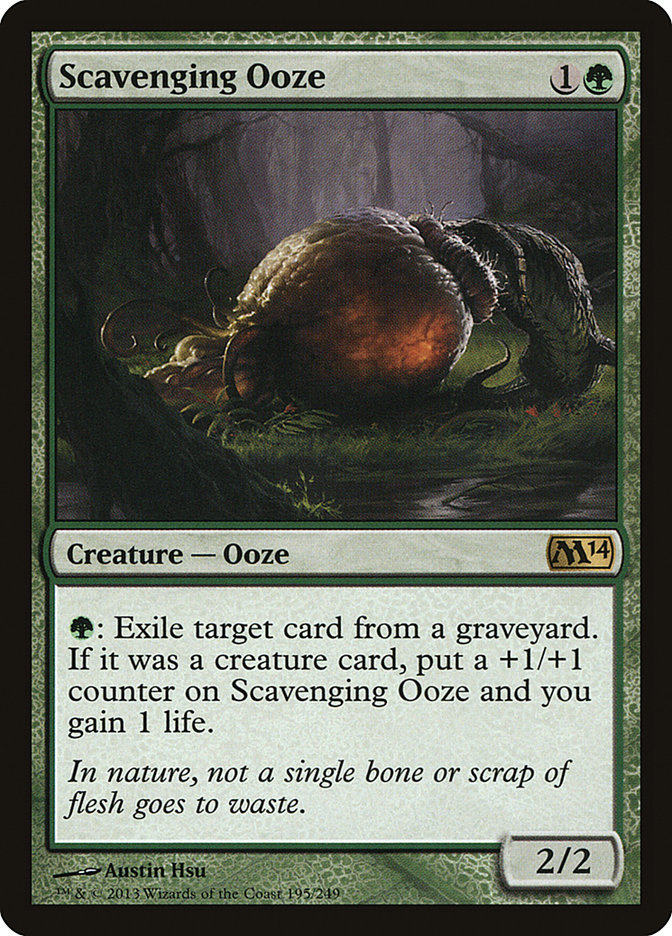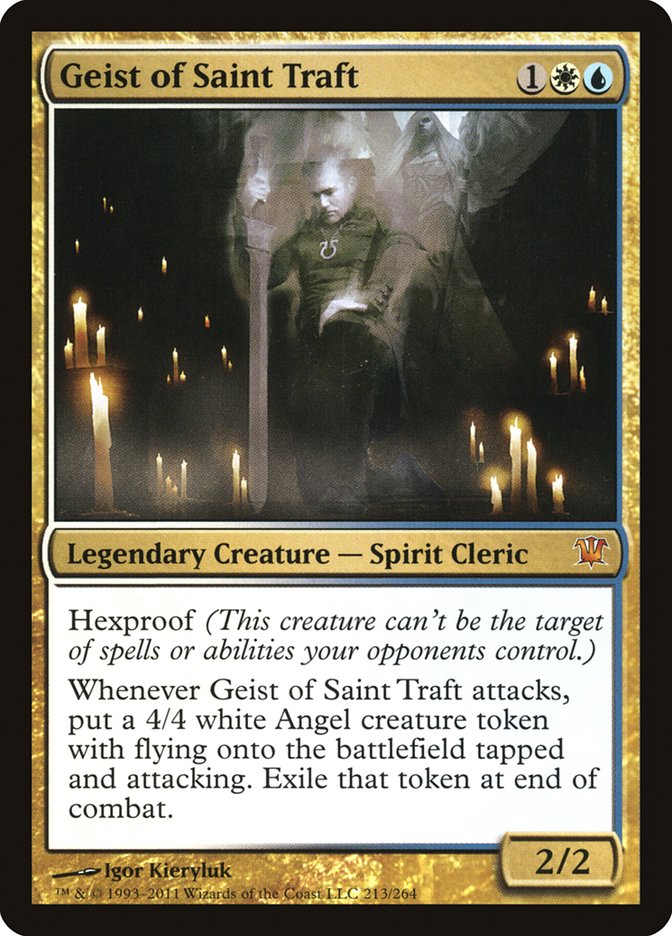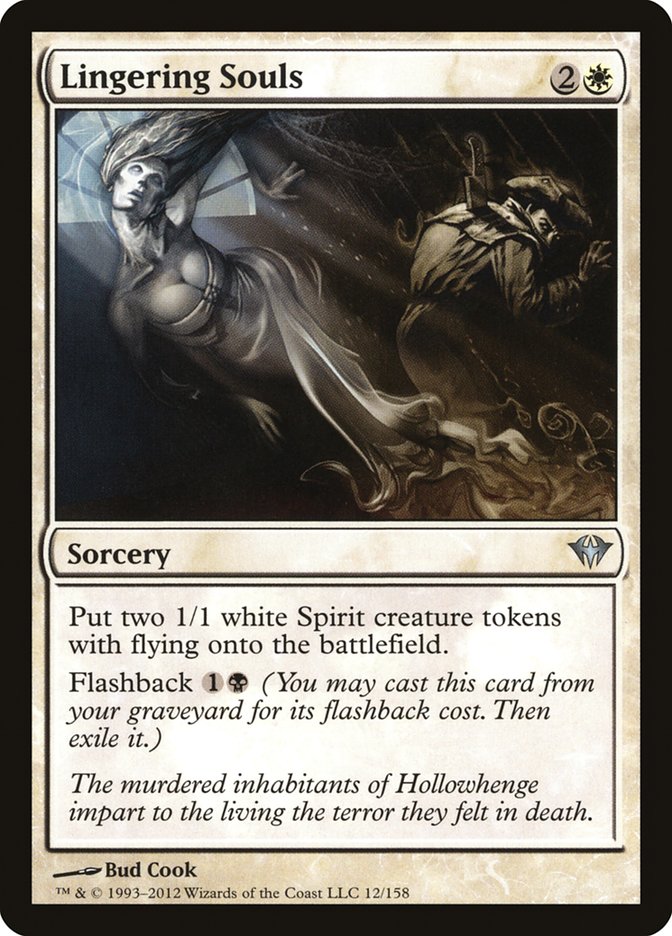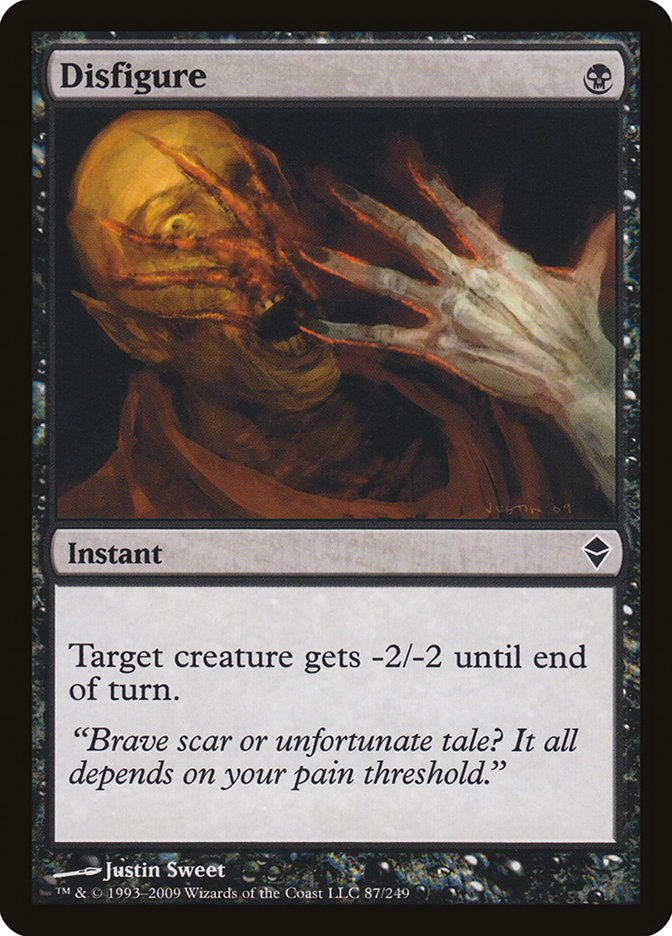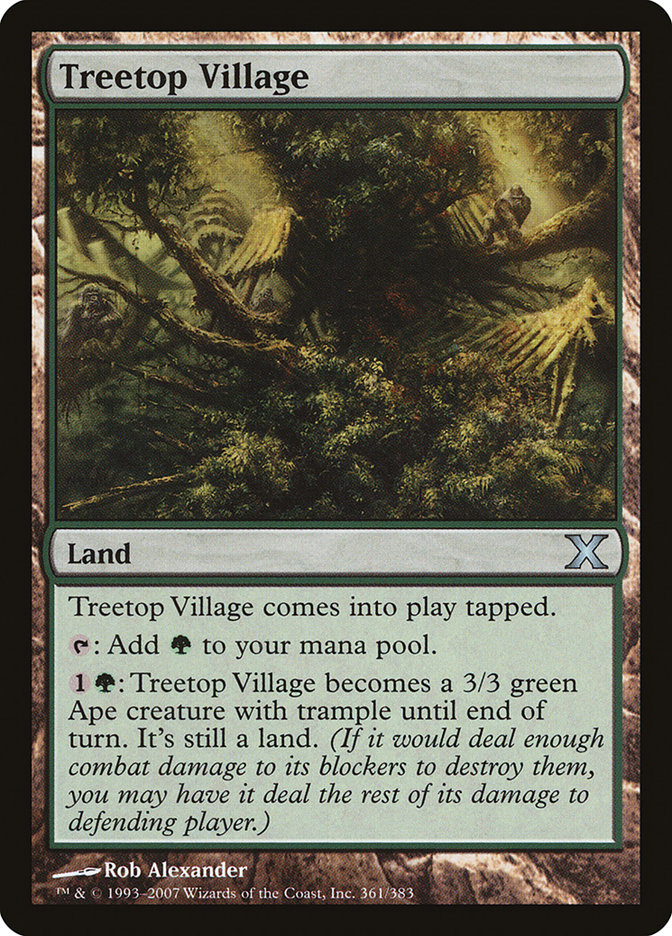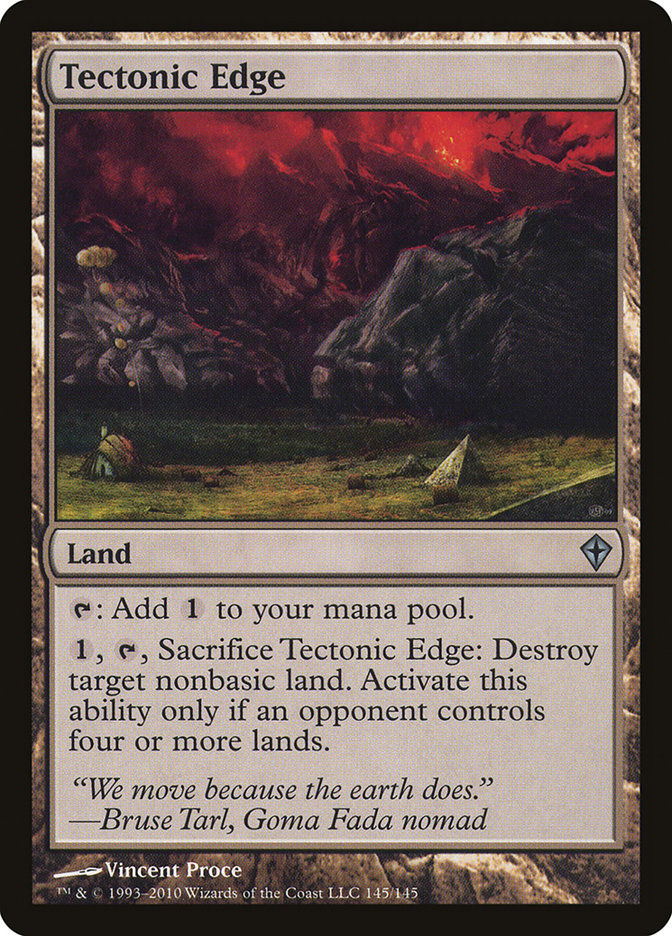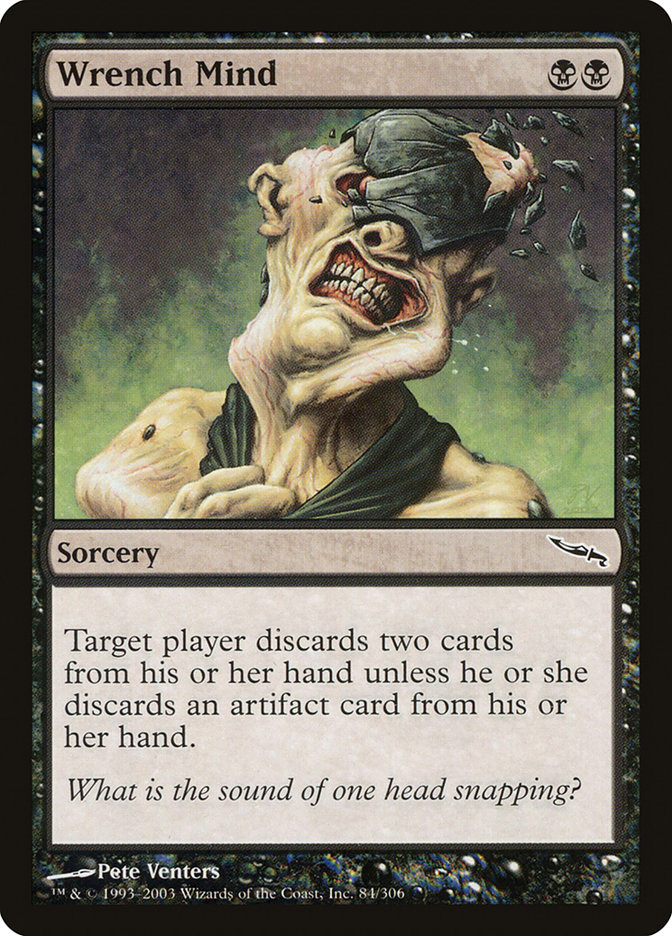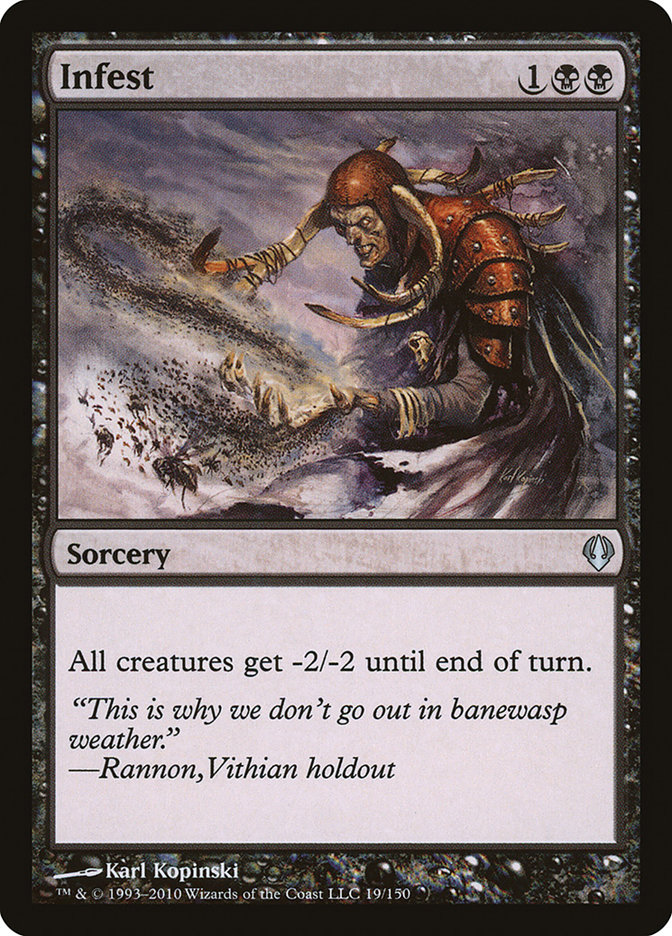The Future of Modern
It was announced earlier this week that the Constructed format at Pro Tour Born of the Gods will be Modern. The upcoming Grand Prix in Detroit will also feature Modern, and with that on my mind, I wanted to explore Modern this week, giving you a little insight into what you should expect once its PTQ season comes around. While two sets will be released before then, it’s never too early to start exploring ideas in a format as vast as Modern, especially with Grand Prix Detroit on the horizon. I’ve heard many of you clamoring for Modern content as of late, and I hope this quenches some of your thirsts!
I don’t claim to be some sort of Modern Master because I haven’t won a PTQ or made Top 8 of a Grand Prix in the format, but I’ve been playing Modern since it began at Pro Tour Philadelphia a few years ago and have been keeping up with it more than most people. I’ve seen the format fall apart with bannings, decks rise and fall based on shifting perspectives, and new decks crop up like weeds when the best deck gets the hammer. I’ve seen cards go from unplayable to unstoppable, and I’ve watched helplessly as some of my favorite role players were banned "just because" (R.I.P. Wild Nacatl). I’ve written an entire article dedicated to ideas on how to improve Modern as a format, which you can read here.
Some of those suggestions may seem a little extreme. A lot of people took that article entirely the wrong way, but I think my points remain visible. Modern at times feels like a watered-down combination of Standard and Legacy, but it doesn’t really have its own voice. If you’ve ever played "old school" Extended, you know what I’m talking about. That format showcased many awesome combo, control, and aggro decks for years and was always a blast to play. The problem was that it was a rotating format, and now we just play Legacy instead (which is also awesome). Modern isn’t a rotating format, so the only ways to freshen things up is to print insane new cards, use Modern Masters as a vehicle for Modern-legal-only new cards/reprints, or unban some of the format’s "monsters."
All of these options are a little dangerous, especially if you mix multiples of them together, but implementing one as an experiment could breathe life into a format that many view as stale. While some of the cards I considered reprinting in Modern Masters could be dangerous, my overall goal was to get people talking or excited about the possibilities at WotC’s disposal. Modern Masters can be used in many different ways, including giving current players access to some of the more expensive cards and pumping new tools into the format. Wasteland and Force of Will might be a bit on the powerful side, but I would like to see them mix things up—and soon.
Much like Legacy, Modern is full of a multitude of powerful spells and interactions that capitalize on all zones and all aspects of the game of Magic. While we don’t have as many polarized combo decks due to the strict "no tolerance" policy, we do have an abundance of powerful "fair" cards. This hopefully leads to a massive amount of interaction between the players and decks, making the format fun regardless of what archetype you decide to play.
One of the most interesting aspects of Modern is that most decks in the format utilize the graveyard to some degree. There are outliers—Affinity, Soul Sisters, the occasional brew—but it’s usually in your best interest to turn your graveyard into a resource. This can mean a lot of things when building your deck, but it can also mean so much more when you’re actually inside of a game trying to gain an advantage on all fronts.
This is one of the reasons why Scavenging Ooze is going to hit Modern much harder than anyone is expecting. With Scavenging Ooze being released into Modern from its reprint in M14, things are definitely going to change. The tag-team duo of Deathrite Shaman and Scavenging Ooze is going to throw the G/B/x decks into overdrive, giving them powerful, proactive threats that dominate the graveyard. Both of these creatures pose problems for decks that rely heavily on their graveyards to interact and stifle the powerful interactions of cards like Snapcaster Mage.
With the lack of powerful dig spells like Ponder and Preordain, the discard effects in Modern are huge. There’s a reason why Thoughtseize is a high-dollar card.
In Legacy, most decks are designed to do just a few things, but they usually do those things very well and have a lot of redundancy. With Ponder and Brainstorm, players are able to easily find another copy (or proxy) of the card(s) that make their deck run smoothly. For example, if you strip away their Show and Tell with Thoughtseize, they can dig for another Show and Tell or Sneak Attack / Dream Halls without batting an eye. Thoughtseize is good in Legacy, but it isn’t that good. Brainstorm even has the added ability to protect your powerful cards from Thoughtseize, floating them on top of your deck in response to a discard spell.
In Modern, that just isn’t the case. The combo decks don’t have a lot of ways to find exactly what they’re looking for because Sleight of Hand and Serum Visions aren’t even in the same spectrum. With that in mind, most decks forego any sort of dig spell and rely on drawing into more copies of whatever their marquee card is. This means that Thoughtseize (and Inquisition of Kozilek) are much more potent forms of disruption because the decks in Modern lack the same redundancy as the ones in Legacy.
This isn’t a bad thing.
While Modern suffers from a lack of powerful dig effects, that just means that the games are going to last longer and be less repetitive. The deckbuilding parameters of Modern matter a lot more because you have to consider how good or bad your deck is against an opposing discard spell. Since so many decks can easily have access to black mana due to the abundance of mana fixing, the threat of Thoughtseize from basically any opponent should concern you greatly. If your deck is soft to Thoughtseize, then you probably shouldn’t be playing it!
The Lightning Bolt Problem
The removal in Modern is also quite strong, giving most players an easy out to the majority of absurd creatures the format has to offer. Lightning Bolt, Lightning Helix, Path to Exile, and Abrupt Decay make up the bulk of what you’re going to have to fight against, but there is so much more you have to worry about going into a tournament with a deck that is mediocre against removal spells. Ultimately, this makes playing aggressive decks somewhat risky. Lightning Bolt, Lightning Helix, or Path to Exile combined with Snapcaster Mage is a real problem that many aggressive archetypes have trouble dealing with and is one of the reasons why U/W/R is such a popular color combination.
In the article I wrote about how to fix Modern, one of my main concerns was the severity in which Lightning Bolt is played. With such solid mana bases, Lightning Bolt out of virtually any shell is something you have to worry about. While Lightning Bolt isn’t necessarily a problem in its own right, the fact that it virtually invalidates aggressive strategies is a problem. There are many ways to solve that issue, but few are justifiable in regards to the long-term goals of the format.
Disclaimer: Only half of the players in the World Championship played Lightning Bolt, but this number could have been much greater since many of the players on Team CFB opted to play B/G over the "more traditional" Jund. You can find those decklists here.
1. Make Lightning Bolt worse by making combo decks and aggro decks better.
Combo decks are an important part of any Eternal format. They create a balance between control and aggro to form the Trifecta. When a format has a dominant aggressive, control, and combo deck, it’s much easier for players to develop their decks based on an expected metagame, and it gives rogue deckbuilders something to target. When the format is comprised of a vast array of playable archetypes, it becomes much more complicated and ultimately much less fun for people trying to think outside the box. There is such a thing as a format being too diverse, but that’s an argument for another day.
Aggressive decks need a bit of help in Modern, and I would love to see WotC give them a boost of some sort. There are so many viable strategies and archetypes in Modern that I feel like Wild Nacatl might not even be a blip on the radar. Lightning Bolt and Lightning Helix provide many players with an easy out, but less prepared players will see just how good it can be. At the moment, I don’t feel like Wild Nacatl would be even close to too powerful or narrow deck design in many ways.
2. Unban or create new cards that are cheap, powerful, and virtually ignore Lightning Bolt.
Tarmogoyf is a poster child for dodging Lightning Bolt and a type of design I would like to see for many cards going forward in Modern. The aggressive decks just don’t have the tools to combat such powerful hosers and ultimately fail. The "Lightning Bolt" test of ages past is a great way to judge whether or not a card is good in Modern, though there are many other factors to consider.
I will not argue in favor of hexproof because I dislike the idea of creating weak creatures that revolve around "Voltron style" game plans, as those decks usually fold to a number of commonly played strategies and fail to promote positive interaction. The viability of hexproof in Modern leaves me feeling a bit sick to my stomach since it’s exactly the opposite of what Modern is trying to promote: interaction.
3. Ban Lightning Bolt.
The worst option of the three, but a possible conclusion that may come up at some point in the future. When Wild Nacatl is a creature you need to ban for bottlenecking aggressive decks, Lightning Bolt is a spell you might need to ban for a similar reason. It constricts deckbuilding to an asinine degree and is used almost oppositely from its designed intent.
When I think of Lightning Bolt, I think of aggressive or burn decks. In Modern, Lightning Bolt is much more common in control decks, which just feels wrong. I personally don’t think banning it would be a good idea, as Lightning Bolt is a versatile removal spell that promotes interaction between players, but the argument remains. If Wild Nacatl was too good, then Lightning Bolt is in the same boat.
The Rock Says
With all that said, many players love Modern because of its diversity. It feels similar to Legacy in that you can build whatever deck you want and play it virtually forever as long as you update it to fight the current menace. One of the most fascinating things about Modern and Legacy is that they will never rotate, meaning that the cards you own will most likely be legal for the entirety their existence. Aside from bannings, your deck could theoretically never change and probably still be viable in a year.
Unlike Standard, Modern doesn’t tend to fluctuate very much. The addition of new sets doesn’t impact Modern nearly as much as Standard because the bar for Modern is set so high in terms of power level. In the past few years, only a handful of cards have broken into Modern and earned their place among the elite. Here are a few of the best:
There are a few other cards from Innistrad and Return to Ravnica that see a bit of play as well, but I feel like the six above are in a league of their own. Their impact on Modern over the last few years can’t be ignored and deserves some amount of recognition. Normally, I wouldn’t expect a core set to reprint something that’s all that viable in Modern. Most of the time, core sets are used to flesh out Standard and aren’t all that important to Eternal formats, but that all changed with the reprint of Scavenging Ooze in M14.
The World Championship was the first stage for the new Modern format featuring Scavenging Ooze, and it didn’t disappoint. There were a reasonable number of different archetypes sporting the M14 reprint, meaning it has uses in plenty of decks.
One of my favorite innovations was from Team CFB, opting to cut red from Jund in favor of better mana and a better manland in Treetop Village. They were also less susceptible to Blood Moon, as they could easily fetch basics for the entire game and be reasonably able to cast all of their spells. In the past, I felt like Jund was splashing red just for Lightning Bolt, and I’m glad to see that it might not be necessary. An interesting step forward to be sure.
The list they played seemed straightforward, and I’ve been giving it a whirl on Magic Online over the last few weeks. After playing with the original list for a few tournaments, I noticed a few small holes. For one, the likelihood of a turn 2 Liliana of the Veil was significantly decreased due to the full four copies of Tectonic Edge and Treetop Village combined with a scant nine fetchlands. Secondly, the Deathmark in the maindeck felt like a metagame call, and I think another Abrupt Decay or even a Disfigure would be much better for what I expect to face.
Without access to Lightning Bolt, Dark Confidant becomes more of an issue. Dismember is a decent answer but comes at a heavy price if you need to kill it fast. In a matchup where the tide can change so rapidly, the small life losses add up when you’re playing Thoughtseize and Dark Confidant as well as a painful mana base. I think that Disfigure gives you a little more play than Deathmark, as you have plenty of answers to an opposing Tarmogoyf already in Abrupt Decay, Maelstrom Pulse, Dismember, and occasionally Liliana of the Veil.
The stress that the Treetop Villages and Tectonic Edges put on your mana base is heavy, but both are potent weapons for winning the mid and late game. In a battle of pure attrition, having lands that interact favorably with your opponent keeps mana flooding from becoming an issue. When you always have something to do with your mana, you will gain an edge against someone who is lacking in that ability. But these additions to the deck come with a cost.
When you’re playing cards like Liliana of the Veil and Scavenging Ooze, having lands that tap for colorless mana or come into play tapped are a real danger to your early development. Not getting your Liliana into play on turn 2 with Deathrite Shaman or having your Thoughtseize coincide with your Dark Confidant on turn 2 can change the landscape of a game dramatically. For this reason, I argue for cutting one Tectonic Edge from the deck in favor of another fetchland to make Deathrite Shaman a little bit better and your draws more consistent.
Here is the current list I’ve been working with:
Creatures (16)
Planeswalkers (6)
Lands (24)
Spells (14)
Sideboard

As you can see, most of the deck has been left intact, as I think they got a lot of things right. The maindeck is incredibly tight, giving you so little breathing room when it comes to making changes. All the cards have important functions, and cutting some or changing numbers would drastically alter the outcome of many games.
Scavenging Ooze is one of the biggest upgrades I’ve seen in a long time. Along with Deathrite Shaman, you can control the graveyard very easily. Scavenging Ooze also gives you a solid threat that can gain life when it starts to matter, and it can grow out of Lightning Bolt range quite easily. With Dismember, Thoughtseize, Dark Confidant, and your lands all dealing you damage, gaining those small life points back is a breath of fresh air. The fact that your deck has so much removal and your creatures all have huge targets on their heads means there will almost always be a creature for Scavenging Ooze to consume.
Dismember is your Lightning Bolt replacement, but it can be a burden (as we talked about before). However, the flexibility of the card is nearly unmatched. Being able to cast it for one, two, or three mana can help you be more flexible in the early turns. Because there are so few aggressive decks in Modern, your life total is less relevant, which ultimately makes Dismember awesome on two levels.
Abrupt Decay is pretty solid, but it has some trouble dealing with common threats in Modern. For one, it doesn’t kill Celestial Colonnade. That is one of the primary win conditions in U/W/R, and cutting that Tectonic Edge might end up coming back to bite me. Dismember is a handy way to kill Colonnade, but they have access to plenty of ways to protect their Colonnade from your spells. But your lands? Not so much.
Maelstrom Pulse being a sorcery is a bit awkward at times, but it is one of the best methods of defense against token decks or planeswalkers. The fact that it can also deal with threats in multiples from the opponent is pretty absurd, and the occasional two for one is backbreaking.
The potent discard effects in the deck allow you to interact with combo decks in a way they aren’t prepared to fight. Many combo decks in Modern are soft to these effects because there is very little raw card advantage and the search effects are fairly scant. There are some combo decks that try to fight through all of your disruption via raw power, and these decks tend to be bad matchups. However, your sideboard has many ways to disrupt these decks.
I’m referring mostly to Urzatron and Scapeshift, both big mana decks that have cheap ways to dig for their endgame spells. One uses Peer Through Depths, and the other uses Ancient Stirrings. Both are ramp decks that utilize their overpowering starts to capitalize on decks that aren’t built to handle those kinds of threats. Karn Liberated, Wurmcoil Engine, Scapeshift, and Primeval Titan are all huge jerks that end most games before they even get started. [Editor’s Note: Karn doesn’t appreciate you calling him names.]
For those decks, we have Shadow of Doubt and Fulminator Mage. These two cards in conjunction with the discard effects allow you to shape the early turns of the game and keep your opponent from using their mana to their advantage. It’s much harder for them to beat your Tarmogoyf starts when you’re disrupting their hand and their mana. While Fulminator Mage is often a proxy of Rain of Tears, I think the upside of having a potential threat or blocker outweighs any sort of possible downside. Unfortunately, Fulminator Mage is $25 for some reason on Magic Online, so I wouldn’t actually blame you for making the change.
Thrun, the Last Troll is a tough threat for most control decks to deal with. As a result, many of those players have resorted to Wrath of God over Supreme Verdict, giving them a way to dodge the regeneration clause on Thrun. But if you’re able to force them into a corner with Liliana of the Veil and early pressure, they will be forced to burn their sweeper in the early game. Sticking a Thrun after that will usually end things quickly.
Wrench Mind combines well with all of your other disruption against any control or combo deck that doesn’t feature artifacts. The fact that Wrench Mind is in the deck makes me very happy, as I’ve always been a fan of Gerrard’s Verdict. But with decks like Affinity, Urzatron, and a few others that play a lot of artifacts, putting it in the sideboard is the best we can do for now. I always cross my fingers for a Gerrard’s Verdict reprint, but I doubt they’ll ever give us that again.
Infest is one of the only sweepers that you have access to that you might actually want. Mutilate and Barter in Blood are both fairly unimpressive, while Infest kills most of your opponent’s creatures while leaving some of your intact. In the matchups where you want Infest, you usually need to draw one in order to overcome some of the stronger token generators. Lingering Souls and Spectral Procession can give you headaches, though Maelstrom Pulse helps alleviate some of that concern. In conjunction with Infest, it should be enough.
Deathmark was deemed good enough for Team CFB to play in the maindeck of the World Championships, so there is no way I’m cutting any from the sideboard. I tried very hard to fit the third one into the sideboard, but I just don’t know what to take out. Phyrexian Arena is so good in attrition matchups, and the rest of the cards all play important roles against your tougher matchups. With a format that is so volatile, you need versatile cards to interact with them, and changing a single sideboard card could mean all the difference.
All in all, I think the deck is probably one of the better decks in Modern. Next week, I’ll have a Magic Online video featuring the deck, and I will likely be playing it in the Magic Online Championship Series this weekend. The deck has a lot of play, a lot of disruption, and a lot of ways to eke out small advantages against unprepared opponents. I’m looking forward to playing Modern for the first time in a long time, and it’s all thanks to Scavenging Ooze.
Todd Anderson
@strong_sad on Twitter
strong sad on Magic Online

